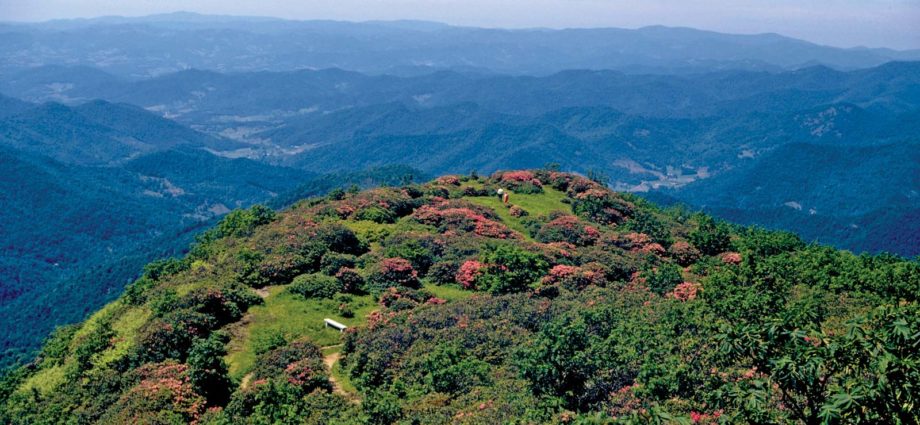The Appalachian wilds offer outdoor enthusiasts a wide variety of adventures, from leisurely hikes to hair-raising white-water kayaking. When the stakes go up, the costs of making a mistake rise too, as many less skillful partakers know well. I have on multiple outings literally “put some skin into the game.” Inspired by the four occasions* when a dermal insult required professional repair, I’ve sewed verses of traditional Japanese haiku into this little Appalachian quilt:
Stitches in Time
Two Stitches
Summer physics class
A brick drops, a rock launches
Rose blooming on face
Seven Stitches
Among russet leaves
A shin greets slippery rocks
Barks of fall colors
Eight Stitches
Winds thresh the hay
Barn door digging a finger
Winter squash harvest
Four Stitches
A dip in spring rains
Slipping a swinging trapeze
An elbow splashes
*Locations in order:
Chattanooga,TN: backyard (pre-helicopter parent era)
Blue Ridge Parkway, NC: spring near Mile Post 365
Chattanooga, TN: backyard (still no parent in sight, brother swinging the door)
Coalmont, TN: swimming hole
According to the Appalachian Regional Commission (ARC), Appalachia “is a 205,000-square-mile region that follows the spine of the Appalachian Mountains from southern New York to northern Mississippi. It includes all of West Virginia and parts of 12 other states: Alabama, Georgia, Kentucky, Maryland, Mississippi, New York, North Carolina, Ohio, Pennsylvania, South Carolina, Tennessee, and Virginia…The Region includes 420 counties… and is home to more than 25 million people.” I grew up in one of those 420 counties, Hamilton, in the city of Chattanooga, but I never thought of myself as Appalachian. My early vision of Appalachia was through the lens of Harry M. Caudill’s Night Comes to the Cumberlands and grainy television images of Lyndon Johnson’s “War on Poverty.” Of course, I also heard stories about “authentic” Appalachians: the independent, self-reliant, Scott-Irish who grew their own food, made their own furniture and clothes, and sat on the front porch to swap tall tales and sing folk tunes.
I gained a more realistic education about southern rural Appalachia as I worked my way through and between a couple of bachelor degrees. I was a form stripper at the TVA Sequoyah Nuclear plant construction site in Soddy-Daisy, Tennessee. I spent three years with the Tennessee DOT relocating families displaced by highway projects, many in rural counties. I labored ten months at the off-the-grid Buffalo Mountain Trout farm outside of Robbinsville, North Carolina. I was a nurse technician at Carter County Hospital in Elizabethton, Tennessee, where many patients came straight from the hills. Yes, I met a few characters who fit one of the negative or positive Appalachian stereotypes, but most folks were much more complex and interesting than the comic book version.
I moved back to Appalachia after 20 plus years of traveling around the world as a nurse in the U.S. Air Force, and settled in Asheville, North Carolina with my wife and daughter.
**Photo: Mountaintop on Blue Ridge Parkway, North Carolina and western Virginia
Source: Encyclopedia Britannica; US National Park Service

My old friend, well done!
Love this. When you think about I’m surprised all of those in our neighborhood didn’t incur more injuries that required stitches when you consider some of the situations we put ourselves in.
“Stitches” left me in stitches laughing about memories of my two brothers and all their escapades that left them in stitches. Not funny back then but funny now.
Fascinating, Jim! I learned some things and appreciate your thoughtful Haiku!
Thanks for the comments. We could definitely piece together a huge quilt if all the neighbors added their own stitch haiku.